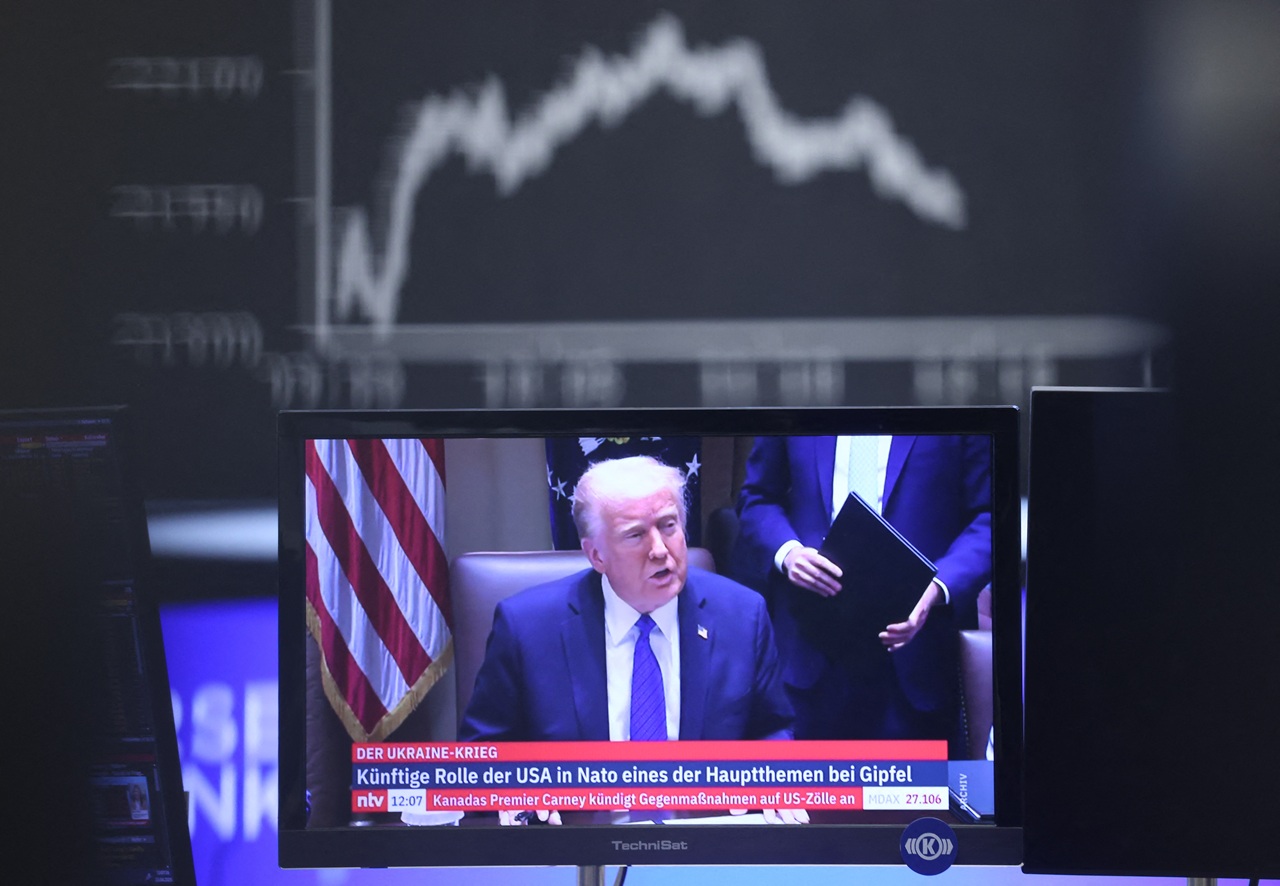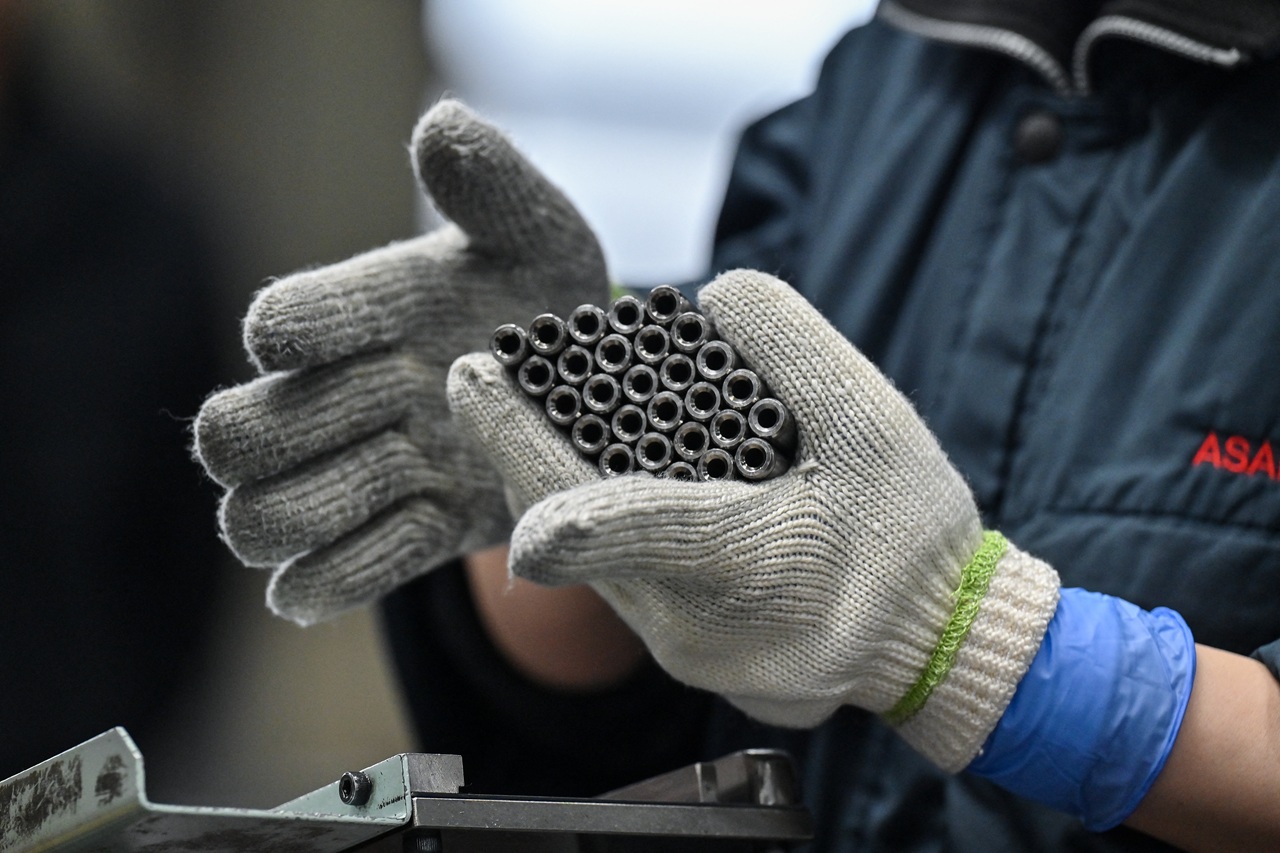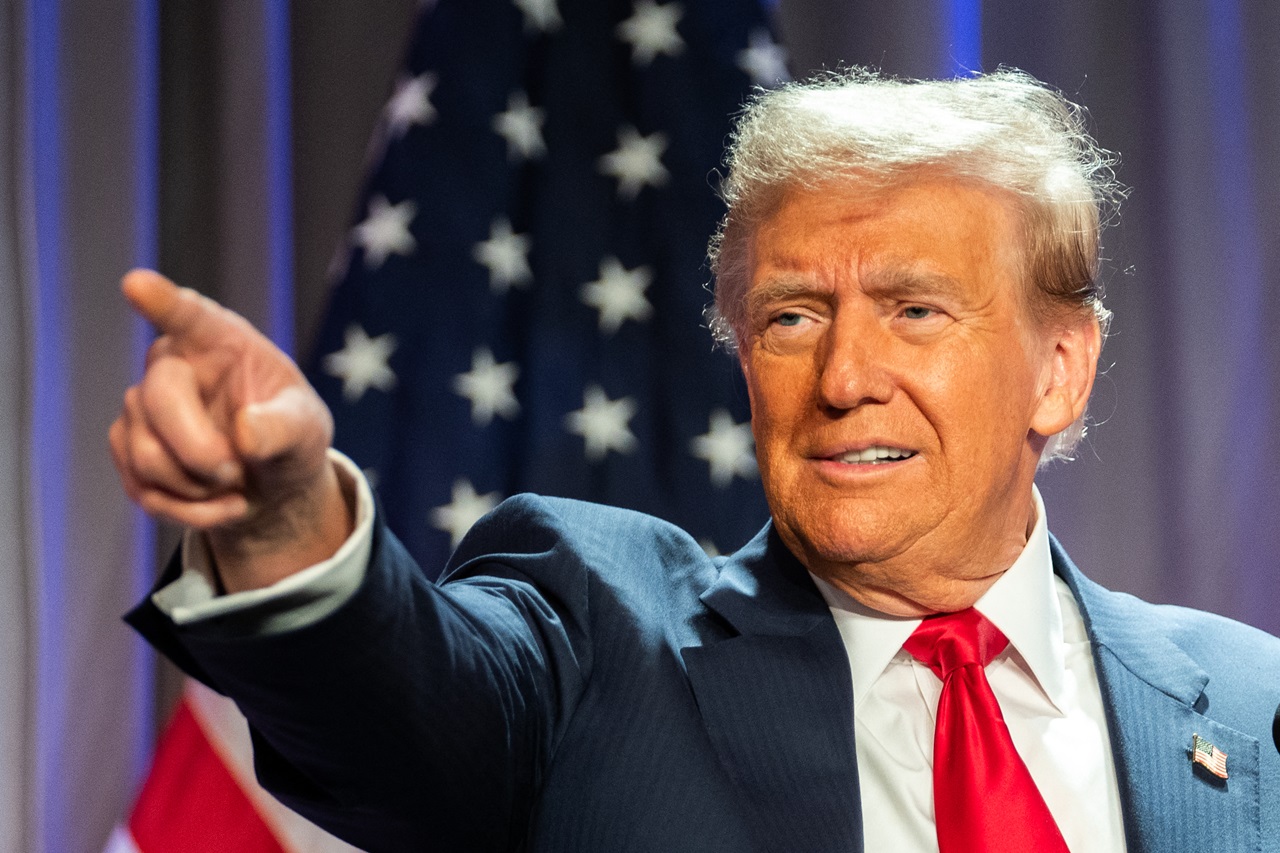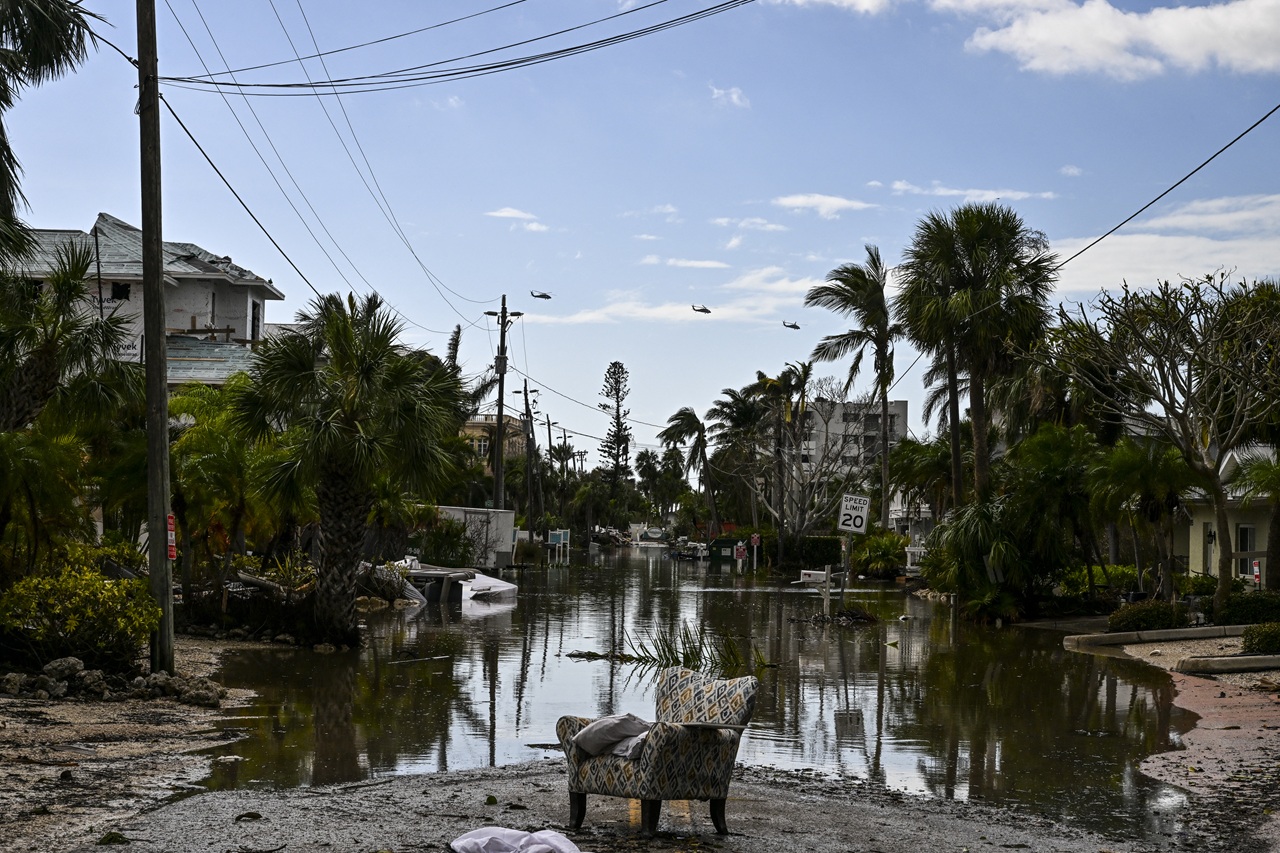
Unwanted heroes: a ban to transgender soldiers
Arguing economic reasons, President Trump announced that the Department of Defense will not re-recruit transgender people. Several studies indicate that the…
In another attempt to get rid of the legacy of the Obama Administration, President Trump has stated through his Twitter account that his government "will not accept or allow" transgender individuals to serve “in any capacity” in the Armed Forces.
"Our military must be focused on decisive and overwhelming victory and cannot be burdened with the tremendous medical costs and disruption that transgender in the military would entail”, the president said in a tweet on July 26.
In June 2016, the Obama administration had declared the opening of military recruitment to transgender people by then-Secretary of Defense Ash Carter, stipulating that the Pentagon would pay for the costs of some medical services such as surgeries and hormone therapy, according to a report from the digital media The Hill.
Lacking one of its electoral promises - to maintain its support for the LGBT community - Trump has argued that the transsexual community "disturbs" and increases health costs in the Armed Forces, even though the Defense Department budget allocates 8.4 million of its annual budget to medical services of the transgender population, which represents 0.02 percent of total annual spending, according to EFE news agency.
The government has not yet determined how it will enforce this ban within the Armed Forces, which could affect about 15,500 active transgender troops, out of a total of 1.3 million active US Army troops.
In July, the House of Representatives narrowly rejected a budget amendment banning the use of Pentagon funds for sex-related treatments, although its (Republican) proponents want to re-introduce it.
Defense Department spokesman Jeff Davis simply commented last July 26 that Trump's decision came as a result of consultations with the Pentagon and forwarded to the White House for further information.
During the 2016 election campaign, Trump boasted of being a "friend" to the LGBT community (lesbians, gays, bisexuals and transgenders) and vowed to fight for them if he won the presidency.
Coinciding with that, and within days of reaching the White House, Trump promised the continuation of an Obama executive order that bans companies with contracts with the federal government from discriminating against their LGBT employees.
But just a month later, Trump overturned a rule, also proclaimed by Obama, that allowed transsexual students to use the bathrooms and changing rooms of their choice according to the genre with which they identify.
Both Democratic and Republican activists and congressmen have heavily criticized the president’s decision regarding transgender people serving in the military.
But the most compelling response has been from the soldiers and public officials who carry out some kind of work within the national defense agency.
In a video, American Veterans for Equal Rights, a group of veterans of the LGBT community, stated through it’s President Steve Loomis that President Trump "without ever serving the nation within the Armed Forces" was wrong to try to transform a 140 character message into law or policy, only managing to "reduce the safety of our transgender service members and our mission unit readiness." For Loomis, transgender service members of the military "don’t detract from unit readiness; on the contrary, they are the most motivated and most contribute to unit readiness," countering one of Trump's arguments.
Likewise, Loomis stated categorically that medical care for transgender soldiers represents "less than 0.04% of the total health budget in the Department of Defense. In fact, the Department of Defense spends ten times more on Viagra than it spends on transgender medical treatment."
The history of discrimination and moral persecution against those identified outside the heteronormativity of the Armed Forces has been long and progressive, even though historical documents have shown that even one of the officers who accompanied General George Washington - Friedrich Wilhelm von Steuben- Had come to the United States fleeing persecution for his homosexuality in Germany.
The US Armed Forces excluded for many years citizens who considered themselves homosexual or bisexual, preventing them from serving their country in any way within the defense corps.
While we could be sure that in times of war any soldier is useful, the first law implemented in the Armed Forces against homosexual behaviors – cataloged as sodomy - was implemented in March 1917, specifying punishments such as martial courts and dishonorable discharges. Subsequently, in the midst of World War II, psychiatrists Harry Stack Sullivan and Winfred Overholser wrote out evaluation guidelines for soldiers suspected of being homosexuals, a tool that was implemented both in the Navy and in the female Armed Forces.
With the United States joining the worldwide conflict, the need for troops led to a change of the martial courts by sodomy into a measure called blue discharges, which represented an administrative mechanism for expulsion against homosexual personnel (although it was frequently used against African Americans as well). Although the blue discharges did not directly involve dishonor, they did become a stigma that made it impossible for the soldier to be reintegrated into civilian life.
The blue discharges were transformed into "general" or "undesirable" casualties, and from 1949 being homosexual in the US Armed Forces was simply unthinkable, to the extent that it became an excuse for many to avoid military service or recruitment in conflicts such as the Vietnam War.
After the summer of love and the sexual revolution that inaugurated the decade of the 70s, several characters appeared in the public scene in favor of the normalization of the homosexuality, especially people like the politician Harvey Milk (that had served in the War of Korea) and technical sergeant Leonard P. Matlovich, who even came to be on the cover of Time magazine.
During that time, many soldiers had to keep their lifestyle hidden, without any legal measures to protect them. In 1993 the US government implemented another controversial measure: President Bill Clinton signed a law instituting a policy known as Don’t Ask, Don’t Tell or DADT, which allowed homosexuals and bisexuals to join the military as long as they did not disclose their sexual orientation.
Since then, the US legal system has taken 18 years to promote a measure that would protect the homosexual and bisexual community when providing military service. On October 10, 2009, then-President Barack Obama announced in a speech to the Human Rights Campaign that he would fight for justice and equal rights for all American citizens who chose to serve in their Armed Forces.
The process was more complicated. It took two attempts on the part of the Democratic Party to revoke the law, since the opposition of the republicans in the Senate - led by John McCain - was irremovable. Finally, on December 18, 2010, the Senate overturned the bill by 65 votes to 31, two days after it had also vetoed the ban against homosexuals.
According to Obama, from that moment, the government would stop asking "thousands of people to live a lie in order to serve the country they love so much." For the president, "sacrifice, courage and integrity will no longer be determined by sexual identity, as they are not determined by race or gender."
The removal of the DADT not only allowed access to the Armed Forces for every American citizen, but also democratized a space for public work. When President Obama lifted the ban to transgender soldiers, the adequacy of the recruitment and integration mechanisms took about twelve months to get underway, including the incorporation of health benefits into the Defense Department budget.
The president has resorted to arguments such as "high medical costs" and "disturbance" within the troops, as if so many years of academic research and debate had been in vain. His new stances, however, appear to be a gesture to appease House members who oppose the inclusion of transgender personnel in the military, as is the case of Republican Rep. Vicky Hartzler (Missouri), who has threatened not to approve the financing of the border wall if the Armed Forces continue to spend funds on the medical treatment of transgender soldiers.
According to a study published by the Journal of Workplace Rights and under the title The Transgender Military Experience: Their Battle for Workplace Rights, by 2015 the US Armed Forces had 15,500 active transgender soldiers and more than 134,300 veterans. These individuals identify with a gender that does not match the gender assigned at the time of their birth, and often opt for hormonal therapies and surgeries to restructure their body according to their identity.
The permeability of gender boundaries has posed a threat to the fundamental characteristics of military bodies such as "domination, aggression, physical force and the ability to put one's life at risk," characteristics that have often been categorized sorely as "masculine".
Another study published by The Hague Center for Strategic Studies (HCSS) under the title LGBT Military Personel. A Strategic Vision for Inclusion published in 2014 states that if soldiers fulfilled at face value with these requirements, only a heterosexual man could serve in the Armed Forces, disqualifying in this way not just women but the entire LGBTQ community.

According to the report, there is no scientific evidence to support the inability of homosexual or transgender individuals to meet requirements in defense bodies, especially after homosexuality was removed from the manuals of psychiatry as a mental disability in the decade of the 1990's.
RELATED CONTENT
Although several studies have determined that the LGBTQ community is more prone to problems such as depression and anxiety, inclusion and normalization of their roles within society may in fact be the mechanism to ensure better mental health.
According to the HCSS study, the positive effects of transgender individuals on the Armed Forces include an increase in the morale of troops determined by the sense of cohesion and acceptance of all members, ruling out the president's argument of a supposed "disruption" in the capacities of the defense teams, especially considering that the processes of social adaptation that the homosexual community has carried out have generated a reduction of episodes of rejection and discrimination in the 21st century.
According to the report, "requesting members of the service to work at their maximum capacity together with personnel from other backgrounds is a common situation in the armed forces, particularly in the context of international cooperation."
As for the expenditure involved in the transgender community in the Armed Forces, the study finds that DADT policy between 1993 and 2010 invested between $290 and $500 million in research, prosecution and transfer of homosexual soldiers, as well as training and the incorporation of their replacements.
Now, looking closely at health care budget data for US military personnel, the cost of treatment, care, and hormone therapy are really minimal, compared to the overall budget.
According to a study by the Rand Corporation in 2016, commissioned by the secretary of defense of President Barack Obama, the total cost of the transgender community in the Armed Forces is between 2.4 and 8.4 million dollars annually, far from the assumption of a billion dollars that President Trump has argued.
During fiscal year 2014, the Pentagon spent $6.7 billion on the health of all active military personnel. During the same year, $49.3 billion was invested in expenditures that included not only members of the military, but also their families and retirees.
According to an analysis by The Guardian, an F-35 plane costs $91.1 million, which represents 984% more than the medical transition budget for gender.
So what is the real reason behind the president's decision?
President Trump's new initiative, in which he plans to again prevent transgender citizens from serving in the military, slaps years of struggle for civil rights and equal opportunity in the United States.
A nation with such patriotism and whose nationalism has been the hallmark of its identity seems to be always in conflict with the determination of gender, as if the adequacy of the parameters of sexual inclination was a threat to strength and integrity of its defense body.
Large armies in countries such as New Zealand, Canada, France, Germany and Australia have determined that inclusion mechanisms within their armed forces bring more benefits than complications; not only from the social and moral point of view but also from the economic analysis of labor benefits and quality of life.
Beyond prejudices and the tendency to return to binary, xenophobic and disqualifying social parameters, the new White House administration is going through a political crisis that sets the tone for its decisions.
With a Republican party divided between legislative options and an uncompromising Democrat party - in addition to a chain of scandals and counterproductive behaviors among its closest ones - the president is able to dismantle the progressive strategies achieved during the presidency of Barack Obama in order to assure support where there is not.
But the numbers and experience speak louder, and it is the same representatives of the Armed Forces who have decided to mark the line of what the president can and cannot do.
In a letter addressed to the president on 1 August, 56 admirals and retired generals protested the removal measure against transgender soldiers, stating that "they should not be dismissed, deprived of necessary medical care or forced to compromise their integrity or hide their identity". The letter was issued by the Palm Research Center in San Francisco and insists that if the ban were reintroduced, "it would cause major problems, depriving the military of important talent for missions and compromising the integrity of transgender troops. Would be forced to live a lie, as well as non-transgender colleagues who would be forced to choose between reporting their comrades and disobeying a law."
Clearly, the president's decision would bring more silver expenses and more losses in the number of trained soldiers and those who have decided to serve their country. It would also reopen very deep wounds in the social fabric of the United States.











LEAVE A COMMENT: